Disturbing Before And After Photos of Lobotomy Patients Will Leave You Concerned About How The Past Handled Mental Health
Lobotomies are one of those things that while frequently depicted in thriller and horror entertainment we often neglect to realize is something that actually has a pretty short history and it wasn't that long ago that it was perpetuated as a common, safe medical procedure with phenomenal outcomes. Or perhaps, it is that very thought that makes lobotomies so terrifying to the average consumer enjoying a horror movie?
Either way, the history of the lobotomy is indeed short. It was only in 1935 that the first human lobotomy happened courtesy of a Portuguese doctor named Egas Moniz, who got the idea of calming down a human after he learned how effective it was at calming down a chimpanzee. Indeed,Moniz is credited with discovering the lobotomy, and if it wasn't for his experiments and subsequent published papers advocating it as a method he believed to be an innovative way to treat mentally ill people, perhaps the next 20 years wouldn't have been so horrifying for anyone who had to go anywhere near a mental hospital, especially women.
However, credit for popularizing it specifically in the United States goes to a physician named Walter Freeman who, with no surgical training, took it upon himself to transform the operation from drilling holes in the skull, to stabbing patients' brains with an ice-pick through the eye socket. Freeman than traveled around the country in van he called, no joke, the Lobotomobile, where in a clearly non-sterile environment performed nearly countless lobotomies at only 12 minutes a piece.
Freeman took before and after photographs to highlight the effectiveness of his procedure, believing that his procedure "surgically induced childhood," leaving people with an "infantile personality," that he believed would eventually mature. Before you get to thinking that these photos are a good thing, take into consideration how Freeman went on to describe at least one of his patients:
In an unpublished memoir he described how the "personality of the patient was changed in some way in the hope of rendering him more amenable to the social pressures under which he is supposed to exist." He described one 29-year-old woman as being, following lobotomy, a "smiling, lazy and satisfactory patient with the personality of an oyster" who couldn't remember Freeman's name and endlessly poured coffee from an empty pot. When her parents had difficulty dealing with her behaviour, Freeman advised a system of rewards (ice-cream) and punishment (smacks).
Walter Freeman practiced for 28 years.
And... he kept record of 3,439 lobotomies he performed during his career.
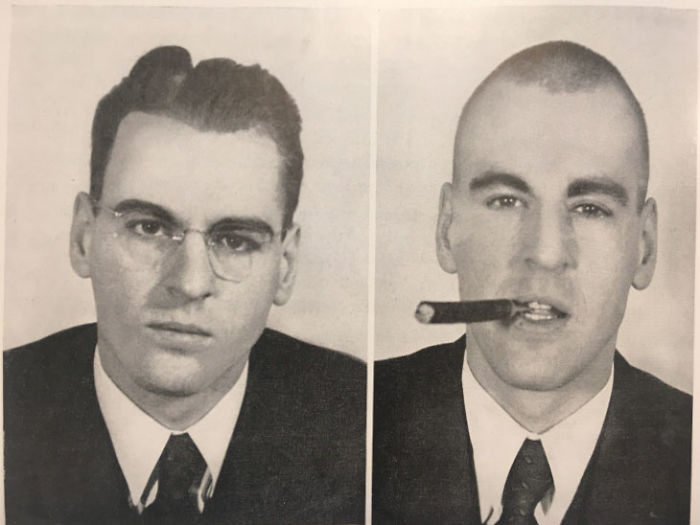 Alina Bennett
Alina BennettWeight Gain
In 1952, [Freeman] performed 228 lobotomies in a two-week period in West Virginia alone. (He lobotomized 25 women in a single day.)
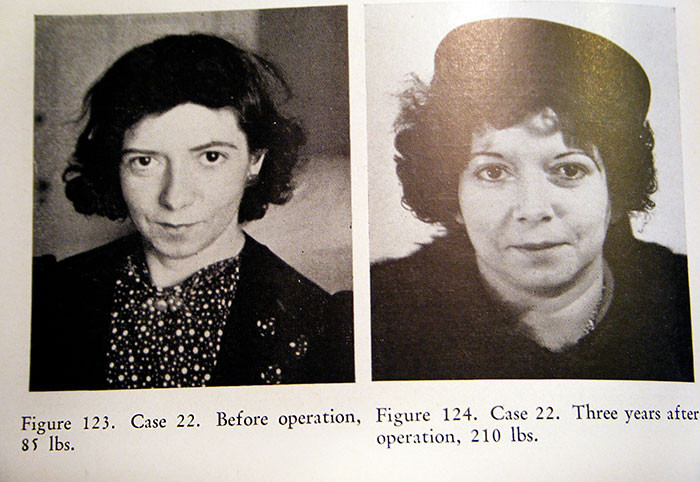 Alina Bennett
Alina BennettCatatonic before, smiles after.
This was considered proof of the effectiveness of lobotomies.
The 1977 Congress investigated "allegations that psychosurgery—including lobotomy techniques—was used to control minorities and restrain individual rights."
 Alina Bennett
Alina BennettWhat things have you seen?
With the help of Freeman and his technique, by 1951 over 18,608 individuals had been lobotomized in the US.
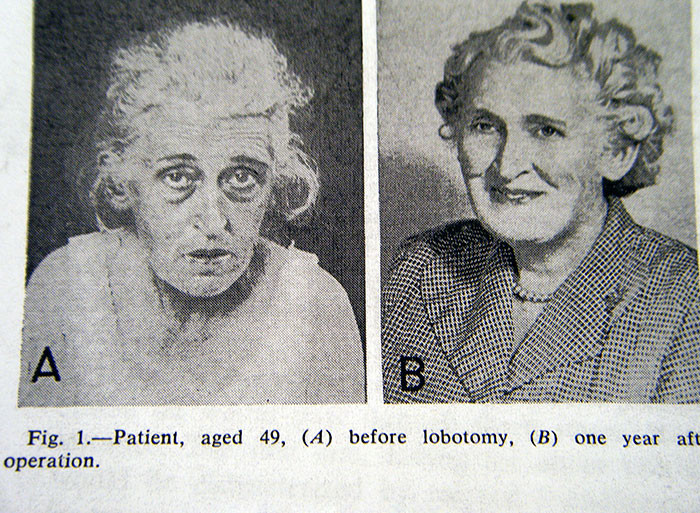 Alina Bennett
Alina BennettAn "unsuccessful" operation by the "Moniz technique."
Freeman really had a high opinion of himself, didn't he?
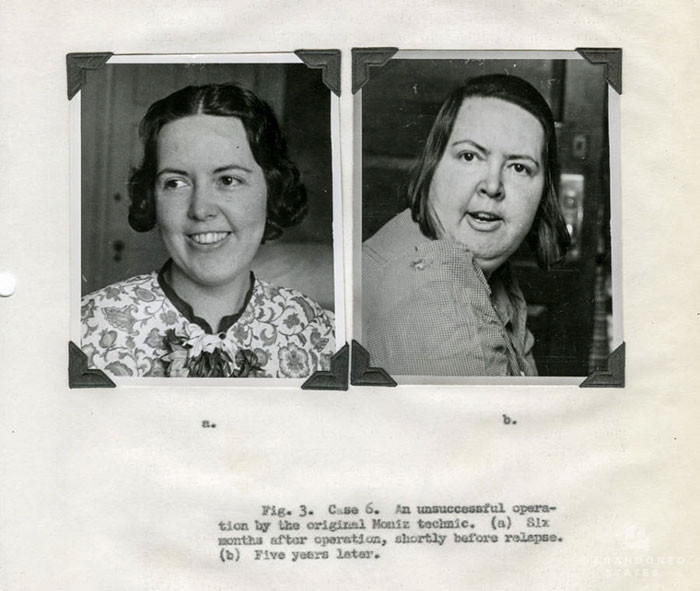 Alina Bennett
Alina BennettFrom woman to child.
Independence, personality... erased in 12 minutes.
 Alina Bennett
Alina BennettTwo times a charm!
If at first you don't succeed, pick yourself up and try again.
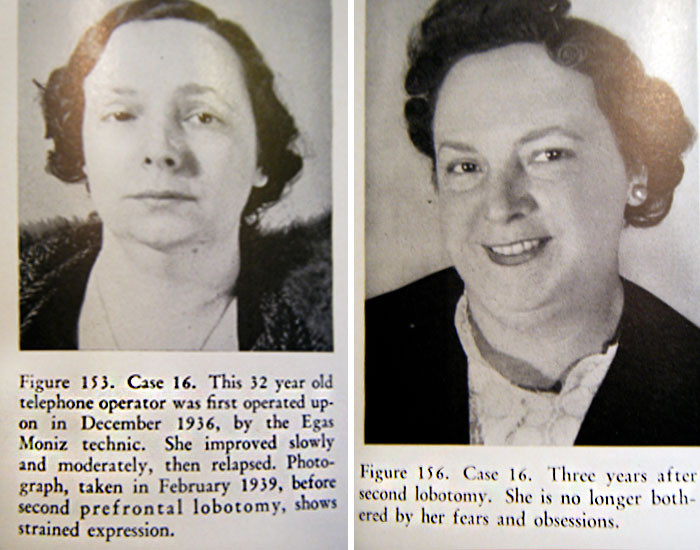 Alina Bennett
Alina BennettThree diferent photos.
Before, Immediately after, and recovery. What do you see in these photos?
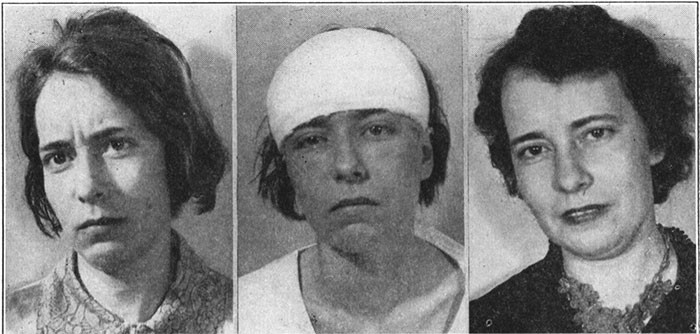 Alina Bennett
Alina Bennett
Smile for the camera
Moniz believed the brain would basically adapt to the injuries provided in his procedure and Freeman set out to prove it.
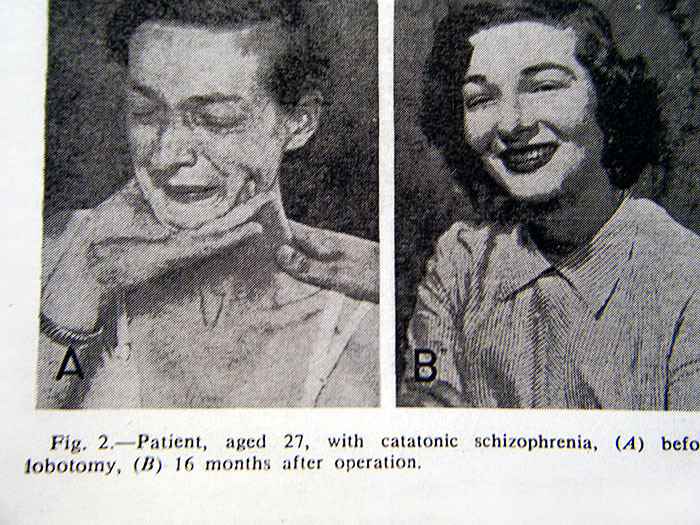 Alina Bennett
Alina Bennett
There was a wide range of reactions, depending on the individual.
"Some patients died as a result of the operation and others later committed suicide. Some were left severely brain-damaged."
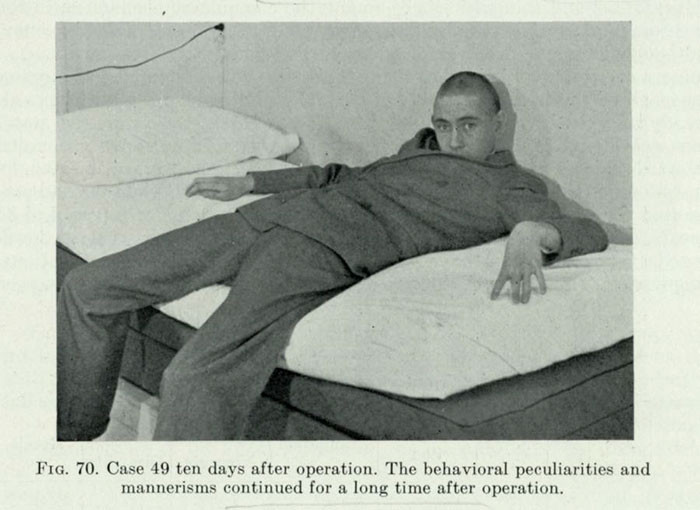 Alina Bennett
Alina Bennett
Instead of blowing up!
He's employed and went to night school. How lovely.
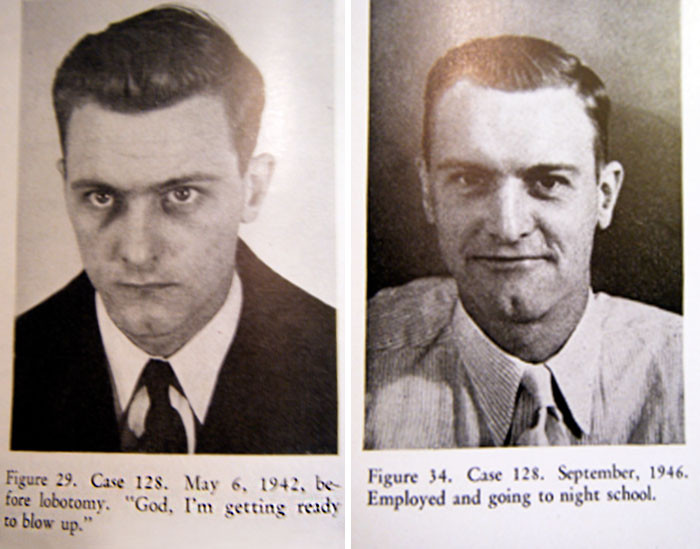 Alina Bennett
Alina Bennett
The typical change.
Setting precedents.
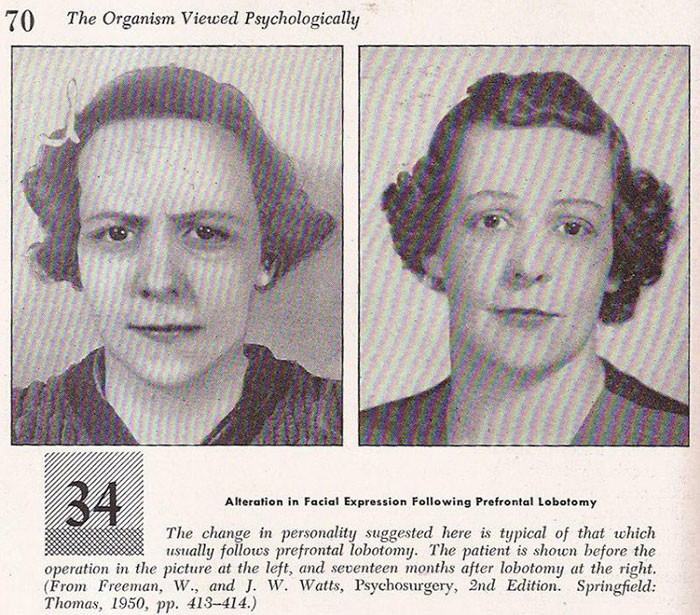 Alina Bennett
Alina Bennett
After two years of extreme violence.
"Immediately following surgery, patients were often stuporous, confused, and incontinent." But recovery never stopped there.
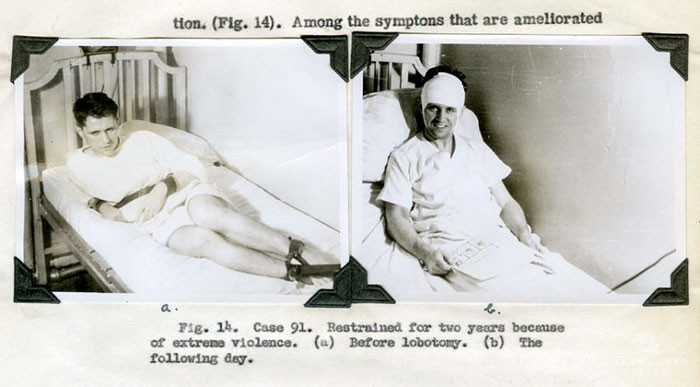 Alina Bennett
Alina Bennett
At least she maintained the household.
Priorities, I guess.
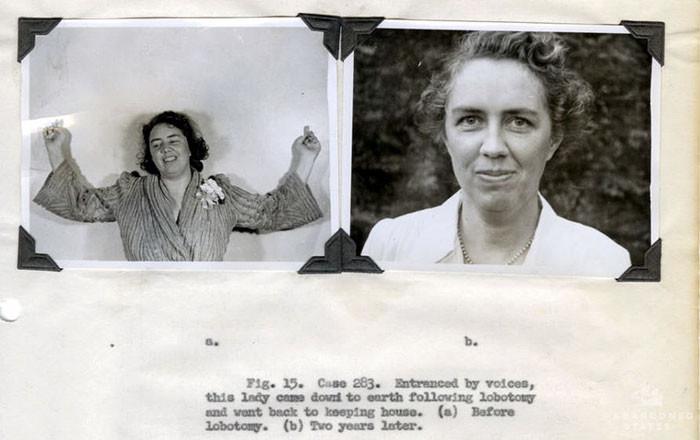 Alina Bennett
Alina Bennett
"Emphasis was put on the training of patients in the weeks and months following surgery."
"Simple schizophrenia patients make nice household pets after the operation."
It's called medicine, get used to it? This is disturbing.
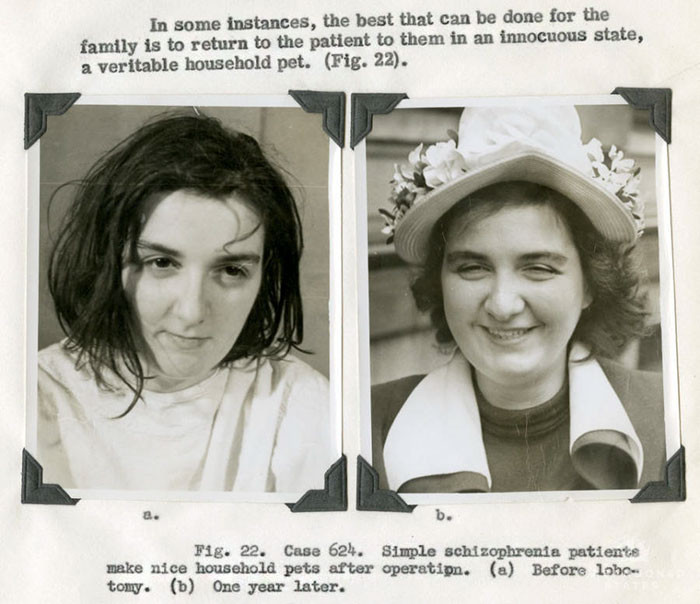 Alina Bennett
Alina Bennett
Complete Transformation
It's like looking at two different people.
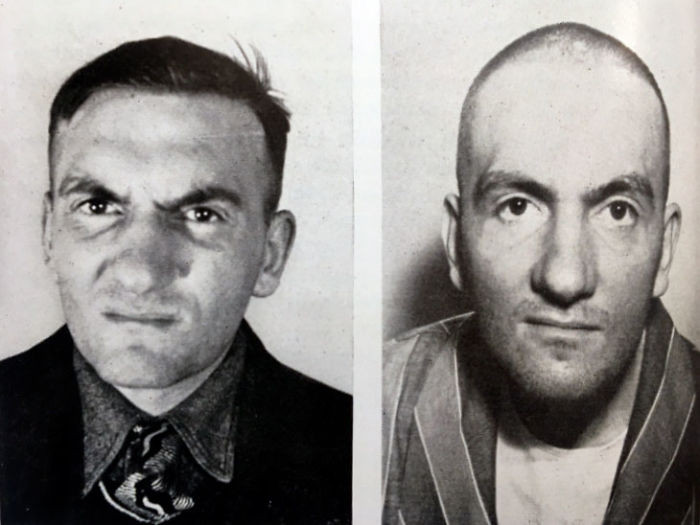 Alina Bennett
Alina Bennett
...but she made no complaints.
Seizures were a common complication of the surgery but women like this didn't complain, so it must be okay.
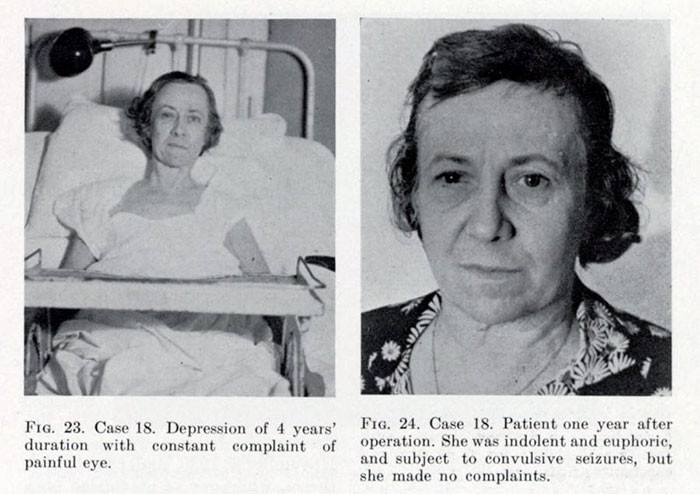 Alina Bennett
Alina Bennett
Weight Gain
You may have noticed how frequently the after pictures depict patients packing on some serious weight gain. Developing an enormous appetite and gaining "considerable" weight was a fairly common side effect of the procedure.
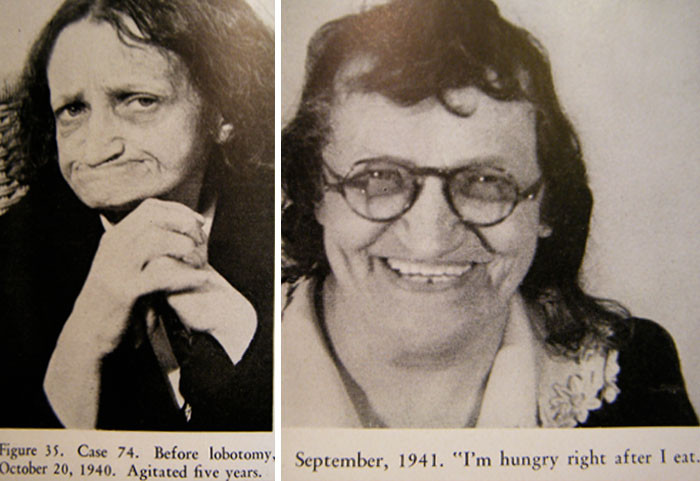 Alina Bennett
Alina Bennett
"Age has little weight in the choice of a suffering patient."
Once caged in the basement, he's now allowed out in public. How depressing.
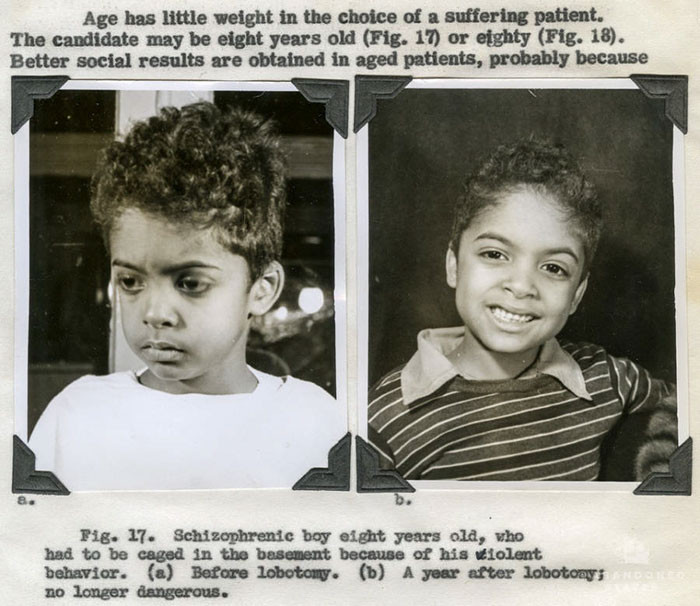 Alina bennett
Alina bennett
Anxiety
He worried too much about not finding a job so they turned him into a shell of a man. Medicine!
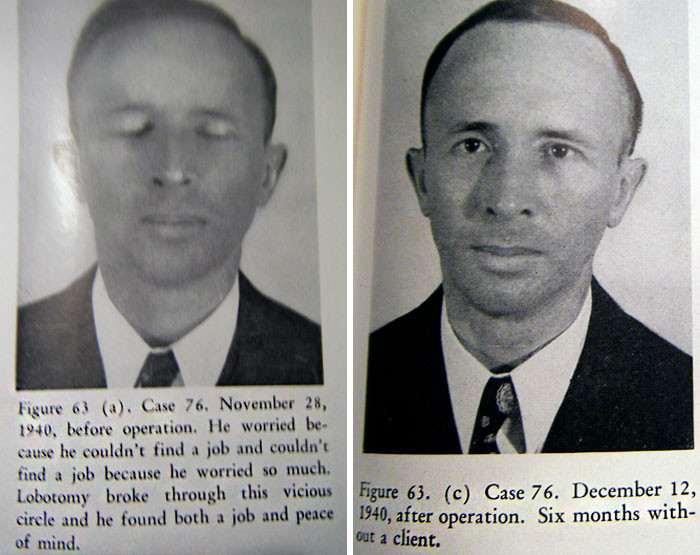 Alina Bennett
Alina Bennett
If electric shock fails, jab her eye.
Women are so easy to control once you puncture their brain!
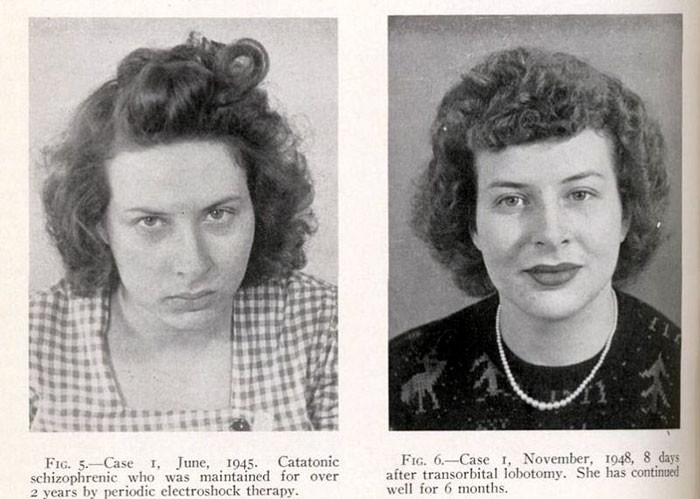 Alina Bennett
Alina Bennett




